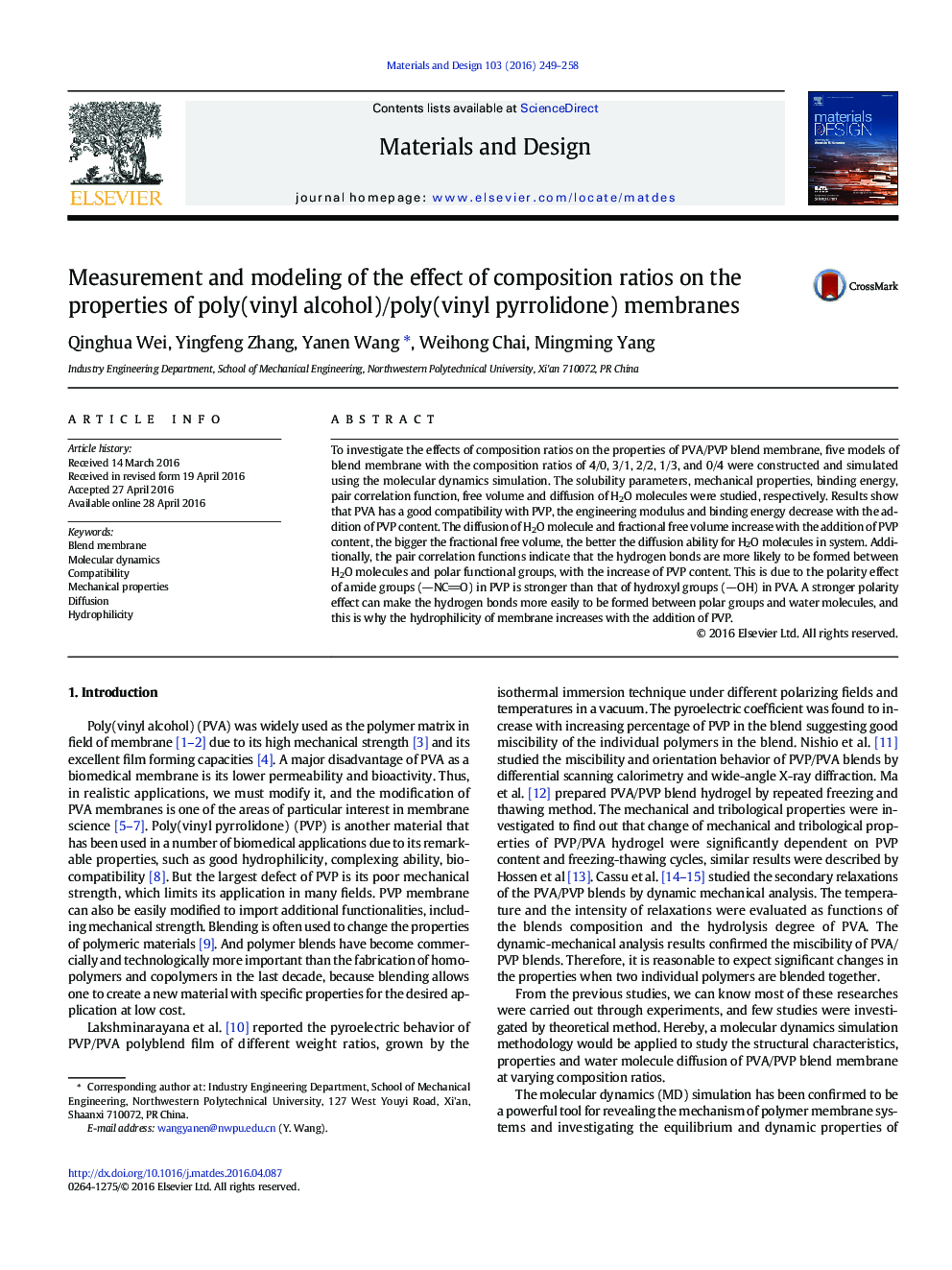| Article ID | Journal | Published Year | Pages | File Type |
|---|---|---|---|---|
| 828028 | Materials & Design | 2016 | 10 Pages |
•PVA/PVP blend systems at different composition ratios were constructed and simulated.•Properties of blend systems were investigated by simulation and experiment.•Interaction mechanism of polymer molecules in blend system was revealed.•Essential reasons for the effects of composition ratios on mechanical properties, hydrophilicity and diffusion behavior of H2O molecules were elaborated.
To investigate the effects of composition ratios on the properties of PVA/PVP blend membrane, five models of blend membrane with the composition ratios of 4/0, 3/1, 2/2, 1/3, and 0/4 were constructed and simulated using the molecular dynamics simulation. The solubility parameters, mechanical properties, binding energy, pair correlation function, free volume and diffusion of H2O molecules were studied, respectively. Results show that PVA has a good compatibility with PVP, the engineering modulus and binding energy decrease with the addition of PVP content. The diffusion of H2O molecule and fractional free volume increase with the addition of PVP content, the bigger the fractional free volume, the better the diffusion ability for H2O molecules in system. Additionally, the pair correlation functions indicate that the hydrogen bonds are more likely to be formed between H2O molecules and polar functional groups, with the increase of PVP content. This is due to the polarity effect of amide groups (NCO) in PVP is stronger than that of hydroxyl groups (OH) in PVA. A stronger polarity effect can make the hydrogen bonds more easily to be formed between polar groups and water molecules, and this is why the hydrophilicity of membrane increases with the addition of PVP.
Graphical abstractFigure optionsDownload full-size imageDownload as PowerPoint slide
